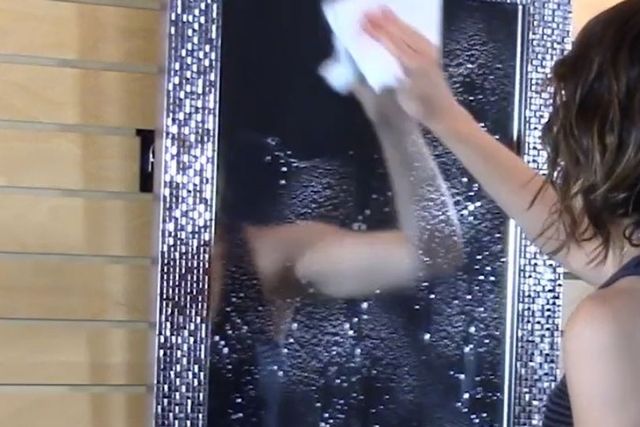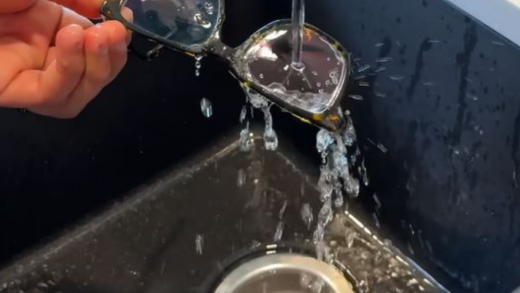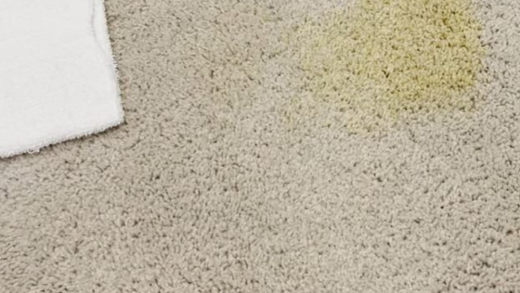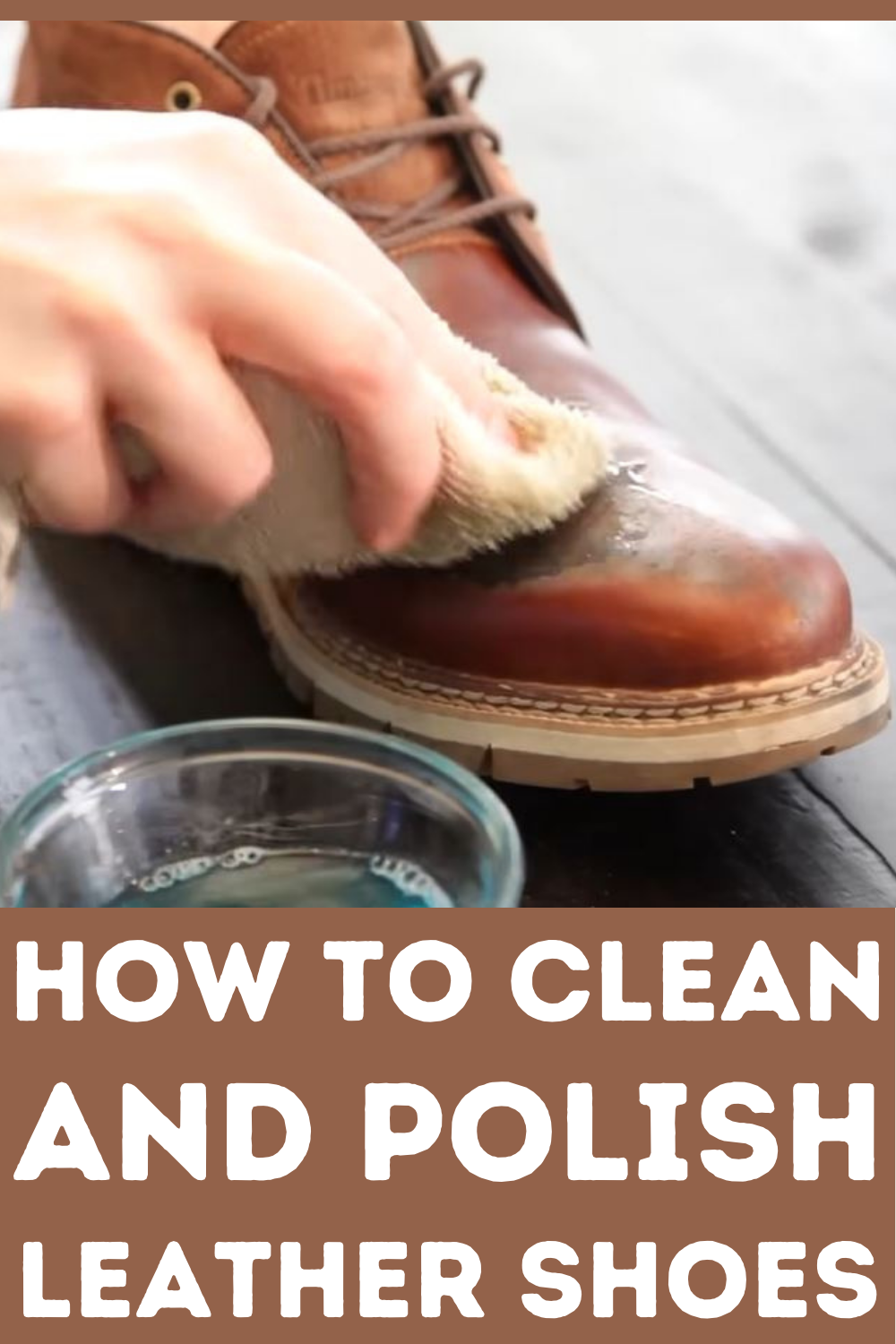Think you’ve got mirror cleaning down? If you’re just spraying Windex and wiping in circles with a paper towel, you’re actually making two big mistakes.

Mistake number one: store-bought cleaners. Sure, they work—but you can make a homemade version that’s just as good, way cheaper, and free of harsh chemicals and extra plastic.
The second mistake? Using a paper towel and wiping in circles. (Okay, maybe that’s two!) Either way, keep reading to learn a more eco-friendly way to clean your mirrors—plus some easy tricks to avoid streaks and lint.
Things to Know Before You Begin
Start with the Frame
If your mirror has a frame or stand, clean that part first. It might sound obvious, but skipping it can make your mirror still look dirty. And if you clean the frame after the mirror, you’ll probably end up wiping the mirror all over again—no one wants that!
What Cleaner Should You Use?
Making your own cleaner at home is a cheaper and greener option—and you probably already have the ingredients. But we totally get that DIY isn’t for everyone. If you go with a store-bought cleaner, just make sure it’s made for glass.
Want to try DIY? A simple mix of vinegar and water is easy to make, non-toxic, affordable, and eco-friendly. Plus, it can stop your bathroom mirror from fogging up for about a week. For best results, spray it on and wait a minute before wiping.
Just a heads-up: vinegar is great, but not for everything. Avoid using it on surfaces like stone countertops or old grout. These can get damaged over time because vinegar is a bit too harsh for them.
What to Use for Wiping
You might be used to cleaning mirrors with a newspaper or paper towel, but these single-use options aren’t very eco-friendly. They can also leave behind lint, dust, paper bits, or even ink marks.
A better choice is a lint-free cloth or microfiber towel, which grabs dirt and grease without leaving any mess behind. When you’re done, just toss it in the laundry instead of the trash. If you still want to use newspaper, go for older ones—they have less ink.
Try Steam Cleaning
Got a steam cleaner with a squeegee? You already have one of the best ways to clean mirrors. Steam works great without harsh chemicals or extra products. Just move the squeegee up and down the mirror and let the steam do the magic.
What You Need
Vinegar Method
- Microfiber cloth
- Glass cleaner (like Windex), or distilled white vinegar and water
- Spray bottle
Baking Soda Method
- Baking soda
- Water
- Microfiber cloth
How to Clean a Mirror With Vinegar
Mix a Solution
To create a DIY solution, mix 1 part vinegar with 1 part water in a spray bottle and shake well. Use distilled water if your house tends toward providing hard water. Of course, skip this step if you’re using a commercial cleaner.
Spray
Spray your vinegar mix or glass cleaner right onto the cloth. This keeps it from seeping behind the mirror’s silver backing, which can cause black spots or rust. If you work fast, you can spray the mirror directly—this usually gives even better results.
Wipe
Mr. Miyagi’s ‘wax on, wax off’ might work in karate, but it’s not great for cleaning mirrors. Circular motions just move dust and dirt around, leaving streaks.
For best results, wipe in a tight S-pattern from top to bottom, covering the whole mirror in one pass.
Use a microfiber cloth, start at the top, and work your way down in that S-shape. Try not to go back over spots you’ve already cleaned.
How to Clean Hard Water Stains off Mirrors
Many U.S. homes have hard water, which can leave chalky white spots on mirrors after the water dries and minerals are left behind. Depending on the minerals, these spots can even be brown or rust-colored.
Hard water stains are some of the toughest to remove from mirrors. It might be tempting to leave a light spot until cleaning day, but the longer it sits, the harder it is to get rid of. The best way to remove them is with a paste that dries on the spot and then lifts away easily. Here’s how:
Create a Paste
In a small bowl, mix the same amount of baking soda and water. The mixture should be about as thick as toothpaste.
Smear the Paste
Spread the paste over the hard water spots, gently rub it in with your fingers, and let it dry.
Wipe and Dry
Wipe off the paste with a clean, damp cloth. If needed, use another clean cloth to dry the surface.
No More Hazy Mirrors
You’ve done all the steps, but your mirror still looks cloudy or streaky. Don’t worry—there are a few common causes, and we’ve got tips to fix each one so your mirror can shine again.
Don’t Use Hard Water
If you have hard water at home, it could be why your DIY cleaner leaves your mirror looking hazy. When hard water dries, it leaves tiny mineral deposits that cause cloudiness. Unless you install a whole-house water softener (which isn’t a bad idea), make your DIY cleaners with distilled water—you can find it by the gallon at most grocery stores.
Choose Gentle Cleaners
Some cleaners that work great on other surfaces can actually damage mirrors—causing haze, streaks, and even bigger problems.
- If your mirror is tinted, ammonia can make the tint chip, discolor, turn cloudy, or even peel off.
- Your grandma might have sworn by bleach for cleaning everything, but on mirrors, it can leave streaks and make them look dull over time.
- Even all-purpose cleaners are too harsh for mirrors. They often leave a toxic film that makes them hazy.
- Soapy cleaners also leave residue that causes streaks—so skip those too.
For mirror cleaning, stick to DIY mixes made with vinegar, hydrogen peroxide, or isopropyl alcohol—or use store-bought cleaners made just for glass.
Clean Regularly
Cleaning your mirrors often is the best way to stop grime and chemical buildup. The more regularly you do it, the easier it gets.


